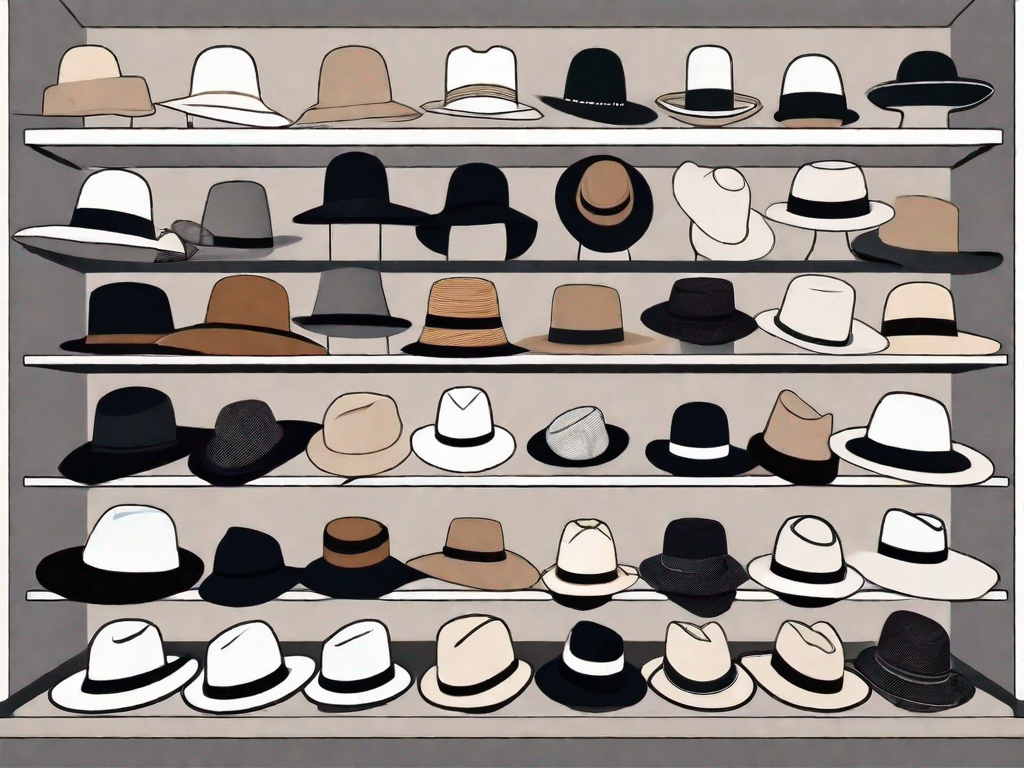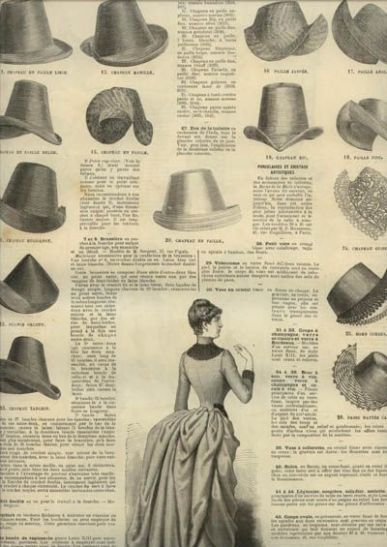Blog
The History of Hats: From Royalty to Modern Streetwear
Hats are more than just accessories—they are powerful symbols of culture, status, and personal expression. Over the centuries, hats have evolved from items of necessity and nobility to fashionable statements worn by people from all walks of life. From the crowns of royalty to the baseball caps of modern streetwear, hats have undergone a fascinating transformation. In this article, we’ll explore the history of hats, tracing their journey from ancient times through to their current place in contemporary fashion.

1. Ancient Origins: Practical Headwear for Protection and Status
The history of hats dates back thousands of years, where they were primarily used for practical purposes. Early head coverings were designed to protect people from the elements, such as the sun, wind, and cold.
Ancient Egypt: The Pharaoh’s Crowns
One of the earliest known forms of headwear was seen in ancient Egypt. Pharaohs and nobility wore elaborate crowns and headdresses, such as the “Nemes” headdress, which signified their royal status. These headdresses were often made of cloth or linen and adorned with gold or jewels, reflecting their high rank.
Greek and Roman Headgear
In ancient Greece and Rome, hats served both practical and ceremonial purposes. The Greek “petasos” was a wide-brimmed hat often worn by travelers, farmers, and gods, offering protection from the sun. Roman soldiers and citizens wore various types of headwear, such as the “pileus,” a soft, brimless cap that symbolized freedom for the Roman slaves who wore them once they were emancipated.
2. The Medieval and Renaissance Periods: Symbolism and Elegance
During the Middle Ages and Renaissance, hats evolved from simple protective gear to more elaborate and decorative items, often symbolizing status, wealth, or occupation.
Medieval Hats: Crowns, Hoods, and Feathers
In medieval Europe, hats became a significant symbol of class and identity. Kings, queens, and knights wore crowns or circlets made of precious metals, often decorated with jewels to signify their authority. The common folk, on the other hand, wore simpler hoods and coifs, often in wool or linen. However, during this period, headwear began to take on a more fashionable aspect, with elaborate designs like the “chaperon” (a type of hood with flowing fabric) and hats decorated with feathers or fur.
Renaissance: The Birth of Fashionable Headwear
The Renaissance period saw hats become essential elements of fashion. The “beret” style began to emerge in France and Italy, while the English favored wide-brimmed hats adorned with plumes or ribbons. Women’s headwear also saw great innovation, with intricate bonnets, veils, and headdresses reflecting their social standing and wealth. The Renaissance was a time when hats were as much about style as they were about function.
3. The 17th and 18th Centuries: Hats as Status Symbols
During the 17th and 18th centuries, hats became firmly entrenched as markers of social rank, and elaborate styles began to emerge, particularly among the European elite.
The Age of Perukes: Wigs and Tricornes
In the 17th century, elaborate wigs, known as perukes, became a symbol of aristocracy in Europe. These wigs were often worn by men of nobility, with powdered white wigs symbolizing wealth and sophistication. Simultaneously, the “tricorn” hat—a three-cornered hat—became popular, particularly in France and England. These hats were made of fine materials like wool, felt, or silk, and often featured lace and ribbons. The tricorn hat was a key element of the aristocratic gentleman’s outfit, often worn with powdered wigs and lavish clothing.
18th Century: The Bonnet and Top Hat
In the 18th century, women’s headwear became more elaborate, with the “coif” giving way to the bonnet, often worn with high hairstyles. For men, the top hat became an emblem of respectability and social class, popularized in the 1790s. Made from materials like beaver felt, the top hat was tall, sleek, and often worn for formal occasions, quickly becoming synonymous with gentlemanly attire.
4. The 19th Century: The Industrial Revolution and Mass Production
The 19th century marked a shift toward mass production, which made hats more accessible to the middle class. The Industrial Revolution brought about advancements in materials and manufacturing processes, resulting in a boom in hat-making.
The Rise of the Bowler and the Derby
In the early 19th century, new styles of hats emerged to cater to a more urban lifestyle. The bowler hat, also known as the derby hat, was introduced in the 1840s as a more durable, practical alternative to the top hat. It quickly became popular among working-class men and even became iconic in British culture, often associated with London’s banking sector. The derby hat was shorter in height, had a rounded crown, and was designed to withstand the rigors of daily life.
Women’s Hats in the Victorian Era
The Victorian era was known for its opulence and formality, which extended to women’s fashion, including headwear. Bonnets, often made of lace, silk, and decorated with ribbons, flowers, and feathers, became popular among women of all social classes. The elaborate “Gibson Girl” hat, often paired with large, sweeping skirts, came to symbolize the ideal of American femininity at the turn of the century.
5. The 20th Century: Hats for Every Occasion
The 20th century was a period of immense change, where hats evolved from being a symbol of status to an everyday fashion accessory worn by men and women of all backgrounds.
1920s: The Cloche and Fedoras
The 1920s brought a revolution in women’s fashion, with the cloche hat becoming a key element of the flapper look. Close-fitting and often made from felt or wool, the cloche hat was worn low on the forehead, framing the face with its rounded shape. At the same time, fedoras and wide-brimmed hats continued to dominate men’s fashion, associated with dapper suits and sharp tailoring.
Mid-20th Century: Hats for the Working Woman
The 1950s and 1960s saw hats evolve further as women began to embrace more versatile styles. Jackie Kennedy, in particular, popularized pillbox hats, which were small, round, and simple, complementing her sophisticated style. For men, the fedora and trilby hats remained popular, often worn with suits and ties.
1960s-1970s: The Hippie Influence
The 1960s and 1970s saw the rise of more casual and bohemian styles of hats. Wide-brimmed sun hats, floppy hats, and bandanas became symbols of the counterculture movement. Meanwhile, the baseball cap began to emerge as a significant trend, especially among young people, signaling a shift toward more relaxed, functional fashion.
6. Modern Streetwear and the Return of the Baseball Cap
In the late 20th and early 21st centuries, hats became an essential element of streetwear culture. The baseball cap, once a piece of athletic gear, evolved into a ubiquitous fashion accessory, worn by celebrities, musicians, and fashion influencers. Streetwear brands like Supreme and Off-White embraced hats as part of their signature looks, while high-end designers like Balenciaga and Prada began incorporating hats into their runway shows, turning them into luxury items.
Hats in the Hip-Hop and Skateboard Cultures
The 1990s and 2000s saw hats like snapbacks, beanies, and bucket hats become staples in hip-hop culture and skateboarding. These styles became synonymous with urban streetwear, often featuring bold logos, bright colors, and graphic prints.
7. The Future of Hats: Fashion as Personal Expression
Today, hats continue to serve as both functional and fashionable accessories. While traditional styles such as fedoras, beanies, and baseball caps remain popular, hats are no longer confined to any one group or occasion. They have become personal expressions, seen everywhere from music festivals to luxury runways. Whether it’s a wide-brimmed hat for a day at the beach or a snapback cap for a casual outing, hats have firmly established their place in modern fashion.
![]()
Conclusion: The Timeless Appeal of Hats
From their ancient origins as protective gear to their current status as a fashion statement, hats have undergone an incredible evolution. Today, they continue to be symbols of personal style, cultural identity, and practical function. Whether worn for protection, status, or simply to add flair to an outfit, hats will undoubtedly remain a central part of fashion history for centuries to come.


